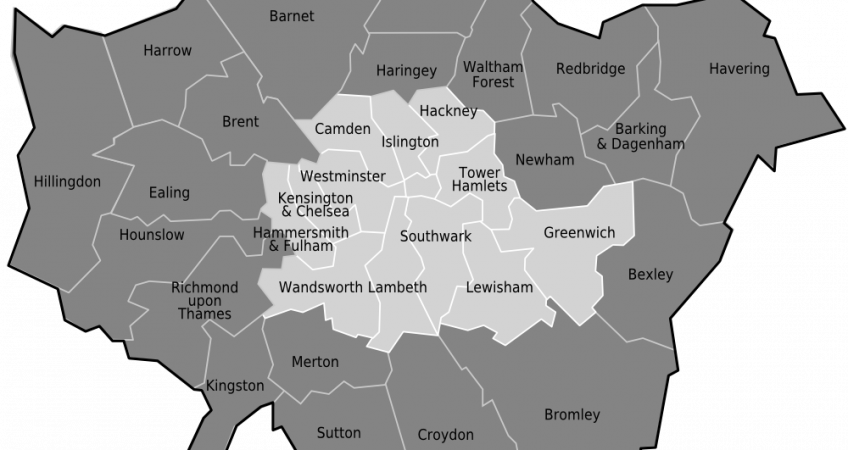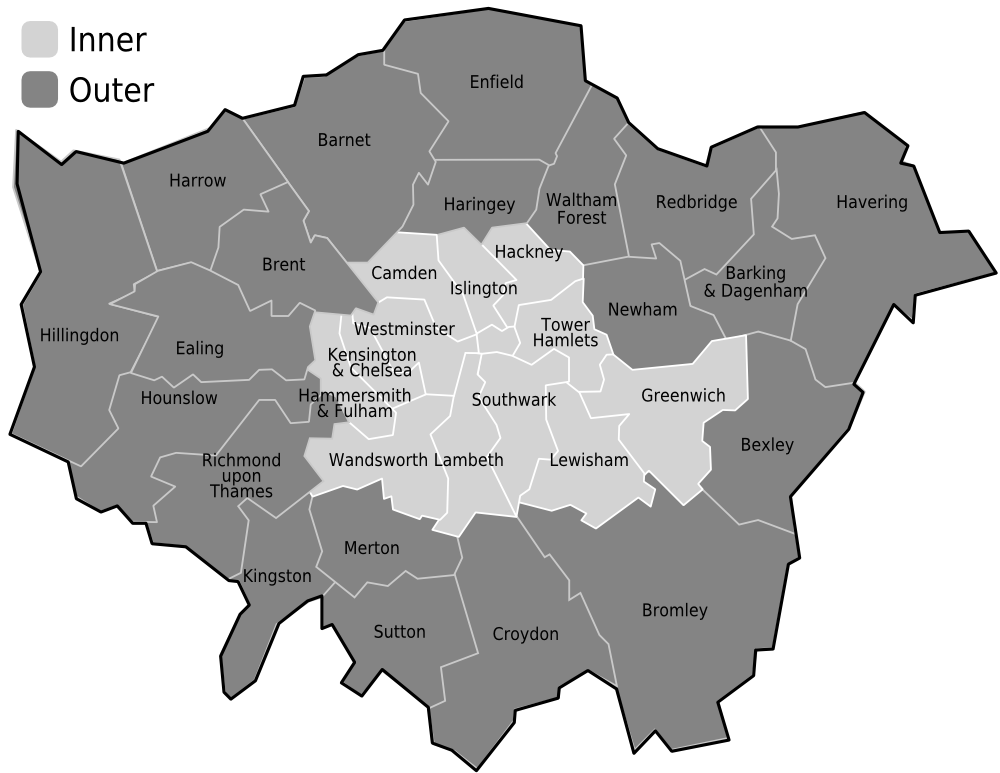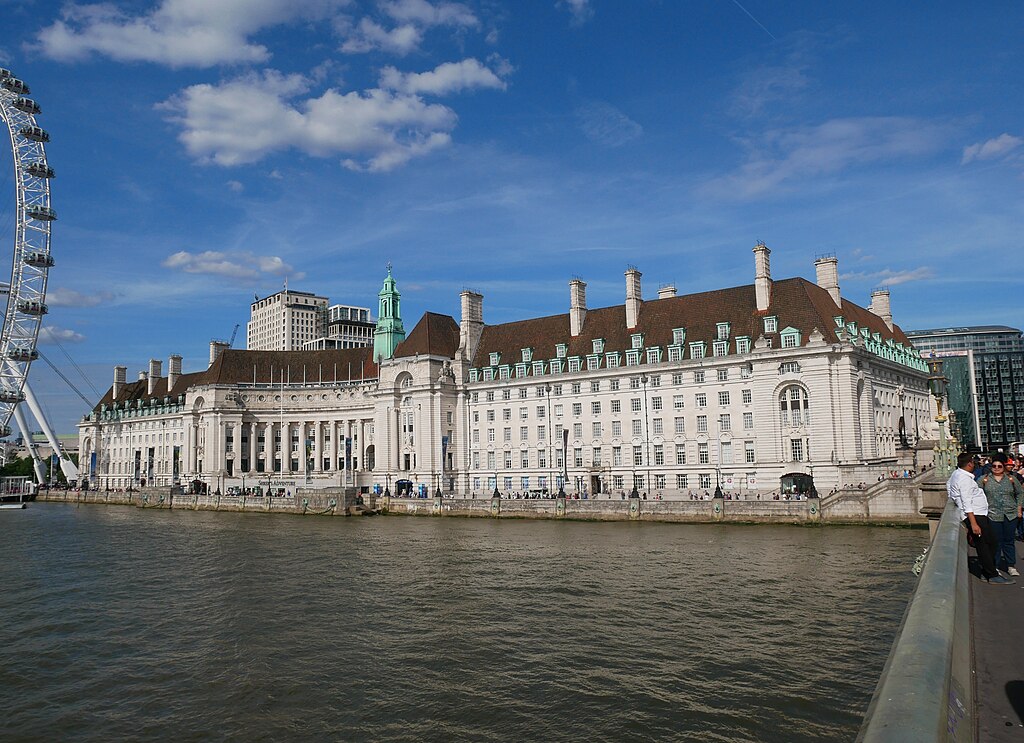
If you live in or are visiting London, you might have heard the term borough used in regard to the administrative division of the city. You will not be the first person to wonder what is a London borough and what the significance of the term is.

What is a Borough in the UK? What is a London Borough?
The term borough designates an administrative unit within the territory of many English-speaking countries. Originally the London boroughs, much like boroughs throughout the United Kingdom, were self-governing walled towns. As you can imagine, the term has shifted its meaning in modern times. Many modern London boroughs have their origins in the ancient boroughs that were granted self-governance by the Crown. The so-called Parliamentary boroughs were formed with the Act of 1832 and then redefined again in 1888 with the Local Government Act that turned them into the so-called County Boroughs, governed by county councils which together form the London government.
For statistical purposes, the area covered by the London boroughs is often analyzed to provide insights into urban development and population trends.
Another important reform, that actually created the London Boroughs in their present-day form, was the Administrative Act of 1965, which created the so-called Metropolitan Boroughs. Some of the former County boroughs were incorporated within the territories of the new metropolitan boroughs. An Inner London borough like Islington, for instance, offers a diverse mix of historical and contemporary London life, reflecting the unique characteristics that distinguish these more centrally located boroughs.
How many boroughs does London have?
There is some confusion as to whether London currently has 32 or 33 boroughs. Officially, there are 32 London Boroughs. The City of London is a separate entity with the special status of a ceremonial county within the London local government. It is not a London borough, even though administratively it is within the territory occupied by the Inner London Boroughs. The City of Westminster, despite being called a City, is considered to be a London borough. Each borough is governed by separate Borough councils that are elected by the local population. Greater London councils are typically larger by both population and territory, while Inner London Boroughs and Inner London councils are generally smaller and denser due to their proximity to the geographical center of the metropolis. This structure enhances the effectiveness of local government within the diverse areas of London.
The division between the London Boroughs is usually that of Inner London and Outer London. Inner London Boroughs include:
- Camden
- Greenwich
- Hackney
- Hammersmith and Fulham
- Islington
- Kensington and Chelsea
- Lambeth
- Lewisham
- Southwark
- Tower Hamlets
- Wandsworth
- Westminster
The delineation between inner boroughs and the Outer London boroughs is not just geographical but also reflects differences in administrative responsibilities and urban density.
The Outer London boroughs include:
- Barking and Dagenham
- Barnet
- Bexley
- Brent
- Bromley
- Croydon
- Ealing
- Enfield
- Haringey
- Harrow
- Havering
- Hillingdon
- Hounslow
- Kingston upon Thames
- Merton
- Newham
- Redbridge
- Richmond upon Thames
- Sutton
- Waltham Forest
These boroughs form the Greater London Authority and as you might have noticed they do not include the City of London. An Outer London borough like Havering showcases the more suburban lifestyle that can be found on the edges of London, with more green spaces and a different pace of life compared to the inner boroughs.
Why are the London Boroughs that many?
The dense population of the capital and the vast metropolitan area that it covers was the main reason the Administrative Reform was necessary in the first place. The old county councils were proving to be unable to meet the expectations of the public and the Royal Commission, which became the reason for Parliament and the Crown, in the face of Queen Elizabeth II to begin the process of abolishing the original 12 boroughs and creating the new 32 boroughs and the City of London as the historic centre of London. The expansion into the Outer London area necessitated the formation of additional Outer London boroughs to adequately manage the broader region.
How to find out what borough you are in?
If you’ve just moved to Inner London, or you related from Inner to Outer London, or vice-versa, you might need to do a little digging to find out which London borough you are currently in. Knowing your local borough is crucial when it comes to paying your taxes and receiving community services such as waste collection, public transport, education, and social services. The easiest way is to gov.uk and enter your postcode in the “Find your local council” search tab. You will get information about your current London borough, including contact information for your local government, the names of your local councilors, the boundaries of the borough, your mayor, and more.
The Former Greater London Council Shared Services between the Borough Councils
The Greater London Council was responsible for some services such as fire and flood prevention and ambulance coverage between 1965 and 1985. The borough councils were responsible for local services, including libraries, cemeteries, and social care. After the abolition of the Greater London Council, they had to take it upon themselves to cover the responsibilities the council looked after until then. That created the need for the so-called shared services.

Even though the Inner London and the Outer London boroughs enjoy relative independence in administrative matters, they all answer to the Lord Mayor of London – who is a directly elected mayor. Additionally, there are a number of the so-called shared services they collaborate on.
For a service to be shared, it needs to be coordinated between the municipal borough councils of at least two London boroughs. These services may include things such as waste collection and disposal, but also purely administrative services offered by the individual borough councils. Their greatest advantage is the budget cuts they allow.
The Royal Boroughs of London
Within the ranks of the 32 London Boroughs, there are several dubbed Royal Boroughs of London. The royal boroughs have a somewhat special status which derives from their historical connection to the royal family. Greenwich was made a Royal Borough to celebrate the Diamond Jubilee of Elizabeth II. Its royal connection is the Palace of Placentia, which is the birthplace of several monarchs.
Kensington and Chelsea is another Royal Borough, an heir of the former Royal Borough of Kensington, due to Queen Victoria being born in Kensington Palace.
Kingston upon Thames, which was formerly in Surrey, was the coronation place of the ancient Anglo-Saxon kings. For that reason, it has the longest-running connection to the Crown among the current Royal Boroughs.
